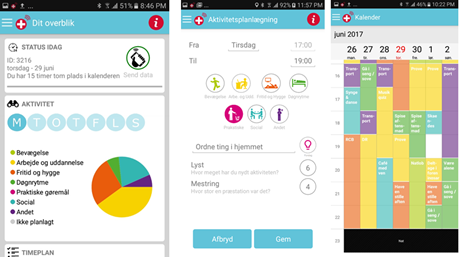Can we, like the psychologist, locate the same activities that promote healthy or depressed behavior, and recommend activities accordingly?
Background
Of all registered mental diseases in Europe, depression has the highest (and growing) prevalence of 6.9% [1]. The high incidence imposes significant adverse consequences, including increased mortality, and lower well-being [2]. Despite the overall concern, the current treatment plan is still the same throughout time [3] with pharmacotherapy as the most used intervention [4]. This is of concern since pharmacotherapy is associated with severe side effects [5]. The limited number of clinical personnel in a growing patient group demands an entirely different approach.
To address this, several research groups have developed a mobile application for depressed behavior. S. Watts et al. [6] created the “get happy program” app where weekly Cognitive Behavioral therapy (CBT) lessons were delivered, involving a fictive female depressed character and how she was dealing with her symptoms. CACHET developed the MONARCA system [7]. It is a personal monitoring system, which uses the patient’s phone to collect activity data (e.g., GPS, accelerometer, phone calls), and self-assessment data (e.g., mood, sleep, level of activity). The data is presented on a web-portal for the clinical personnel to monitor the progress, as well as on the phone to self-educate the patients.
Project Objectives
This Ph.D. project aims to develop the next generation of a mobile application for depressed behavior that provides personalized recommendations to the user based on prior monitored activities and mood.
To achieve such an application we performed a workshop with patients to create a smartphone application that investigates how depression and behavior relates. The result was named Moribus (Latin for behaviour) with screenshots shown in the figure below. [8-9].

The study is still active and can be found here.
The findings from Moribus, together with several user-centered design workshops, will yield the final version named: MUBS. It will be designed as a recommender system to elicit behavioral change in the subject, and hopefully, prevent the user entering a depressive state. The first workshop has already been conducted, and some low-fi sketches have been developed, as seen in the figure below.

Below is a video of the project being pitched at DTU Compute.
References
- Wittchen, Hans-Ulrich, and Frank Jacobi. "Size and burden of mental disorders in Europe—a critical review and appraisal of 27 studies." European Neuropsychopharmacology 15.4 (2005): 357-376.
- Ferrari AJ, Charlson FJ, Norman RE, Patten SB, Freedman G, Murray CJL, et al. Burden of Depressive Disorders by Country, Sex, Age, and Year: Findings from the Global Burden of Disease Study 2010. Hay PJ, editor. PLoS Med. 2013;10(11):e1001547. PMID: 24223526
- Gautam S, Jain A, Gautam M, Vahia VN, Grover S. Clinical Practice Guidelines for the management of Depression. Indian J Psychiatry. Wolters Kluwer -- Medknow Publications; 2017;59(Suppl 1): S34–S50. PMID: 28216784
- Robinson WD, Geske JA, Prest LA, Barnacle R. Depression treatment in primary care. J Am Board Fam Pr. American Board of Family Medicine; 2005;18(2):79–86. PMID: 15798136
- Khawam EA, Laurencic G, Malone DA. Side effects of antidepressants: An overview [Internet]. Cleve Clin J Med. 2006. p. 351–361. PMID: 16610395
- Watts, Sarah, et al. "CBT for depression: a pilot RCT comparing mobile phone vs. computer." BMC Psychiatry 13.1 (2013): 1.
- Bardram, Jakob E., et al. "The MONARCA self-assessment system: a persuasive personal monitoring system for bipolar patients." Proceedings of the 2nd ACM SIGHIT International Health Informatics Symposium. ACM, 2012.
- Rohani DA, Tuxen N, Kessing L V, Bardram JE. Designing for Hourly Activity Sampling in Behavioral Activation. In: Proceedings of the 11th International Conference on Pervasive Computing Technologies for Healthcare. ; 2017:1162-1170.
- Bardram JE, Rohani DA, Tuxen N, Faurholt-jepsen M, Kessing L V. Supporting Smartphone- based Behavioral Activation : A Simulation Study. UbiComp ’17 Proc 2017 ACM Int Jt Conf Pervasive Ubiquitous Comput Proc 2017 ACM Int Symp Wearable Comput. 2017:830-843. doi:10.1145/3123024.3125617.